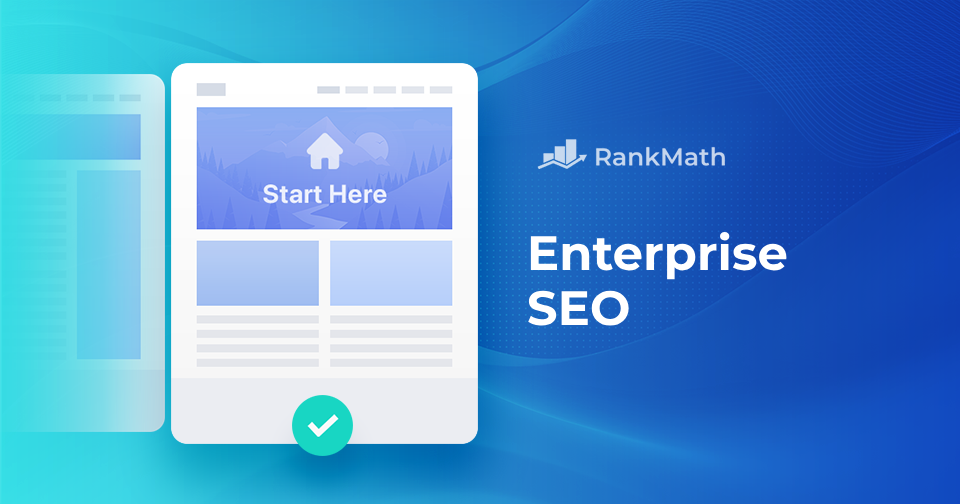Having a strong and prominent online presence is important for any business.
For large organizations, the stakes are even higher. This is where enterprise SEO comes into play.
But what exactly is enterprise SEO, and why is it so important?
Enterprise SEO is optimizing a large organization’s website to improve its visibility in search engine results.
In this post, we’ll discuss the essential techniques for optimizing extensive websites, and the tools to streamline the process.
So, without any further ado, let’s get started.
Table Of Contents
1 What is Enterprise SEO?
Enterprise SEO is the process of optimizing the presence of large organizations with complex, extensive websites. These sites often have thousands of pages, diverse content types, and multiple subdomains, requiring a comprehensive and strategic approach.
For instance, Amazon is a global e-commerce giant with millions of product pages, categories, and subcategories.

Enterprise SEO goes beyond basic SEO practices to address the unique needs of large-scale businesses, focusing on improving search engine rankings, driving organic traffic, and enhancing user experience across vast web properties.
Let us now discuss how enterprise SEO is different than the traditional SEO.
2 How is Enterprise SEO Different Than Traditional SEO?
Enterprise SEO and traditional SEO share the same fundamental goal: improving a website’s visibility in search engine results.
The below table highlights the key differences between enterprise SEO and traditional SEO.
| Aspect | Enterprise SEO | Traditional SEO |
| Scale and Complexity | Manages thousands to millions of pages (e.g., Amazon, Walmart). | Manages a smaller number of pages, typically under 100. |
| Tools and Automation | Requires advanced tools and automation (e.g., BrightEdge, Conductor). | Primarily uses basic SEO tools and manual efforts. |
| Content Strategy | Extensive, multi-format content tailored to various customer journey stages (e.g., Salesforce). | Focuses on fewer, simpler content pieces like blog posts and local pages. |
| Technical SEO | Manages complex site architectures and requires sophisticated strategies. | Simpler site structures and fewer technical challenges. |
| Scalability and Flexibility | Must be scalable and adaptable to market trends and algorithm updates (e.g., Apple). | There is less need for scalability |
| Budget and Resources | Higher budget and more resources allocated for comprehensive SEO efforts. | Lower budget, often limited to smaller-scale SEO investments. |
| Keyword Strategy | Targets a broad range of high-value, competitive keywords. | Focuses on a narrower set of keywords, often targeting local or niche terms. |
| Challenges | Handling large-scale site updates and maintaining consistency across many pages. | Managing limited resources, achieving visibility in niche markets. |
| Examples | Amazon, Walmart, Microsoft, Apple, IBM, Salesforce, Nike. | Local businesses, small e-commerce sites, personal blogs. |
3 Best Practices for Enterprise SEO
Enterprise SEO requires a more comprehensive and strategic approach compared to traditional SEO due to the size, complexity, and scope of large organizations’ websites.
Let us now discuss the best practices for enterprise SEO.
3.1 Conduct Comprehensive Site Audits
A thorough site audit begins with a technical SEO audit, which involves identifying and fixing issues such as crawl errors, broken links, and slow page load times. These technical elements are important because they directly impact how search engines index and rank the website.
Use tools like Google Search Console to identify and fix technical issues across its extensive web properties.
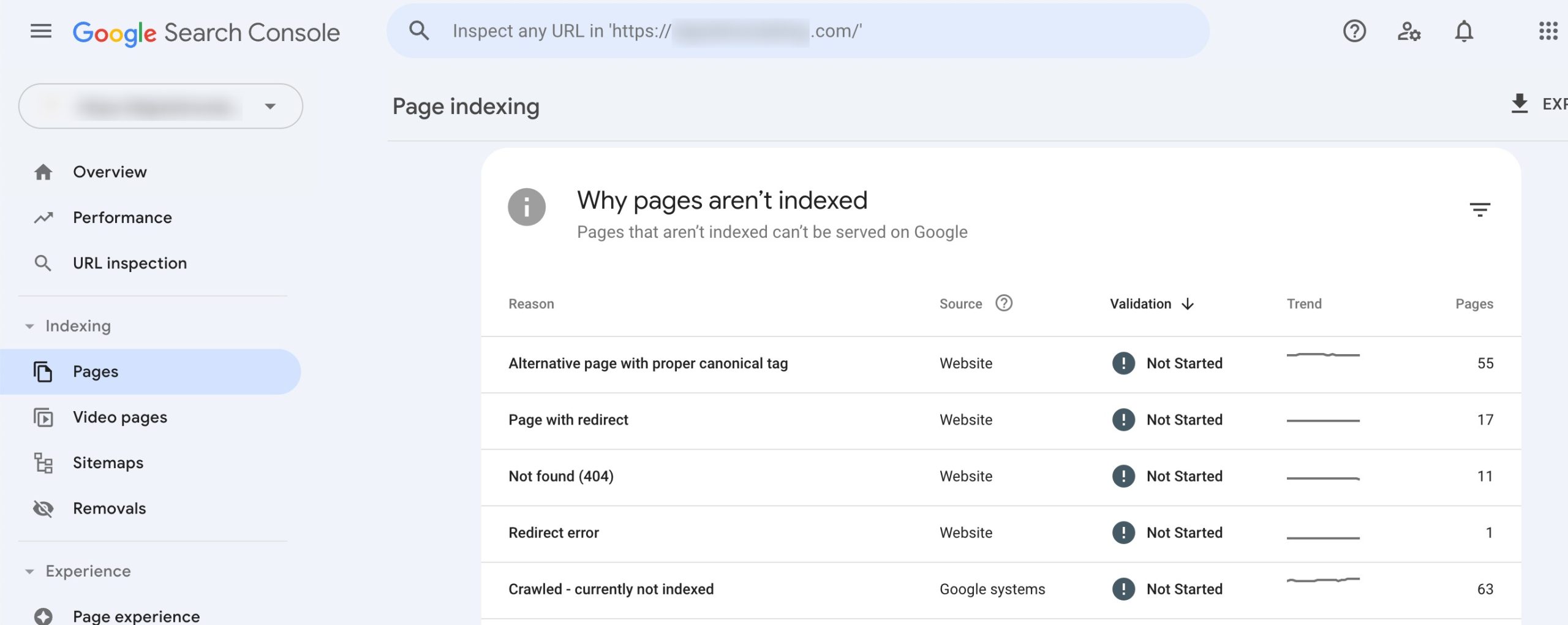
In addition to technical aspects, a comprehensive site audit involves a detailed content audit. This process evaluates the quality, relevance, and performance of the website’s content, identifying outdated or underperforming pages that need updating or removal.
Moreover, a comprehensive site audit often includes competitive analysis, allowing you to benchmark the SEO performance against key competitors.
You can identify opportunities for improvement and gaps in your SEO strategy.
Refer to our dedicated tutorial to gain valuable insights into your competitor’s SEO strategies using Rank Math.
3.2 Advanced Keyword Research
Advanced keyword research is essential in driving organic traffic and improving search engine rankings for large-scale websites.
Unlike smaller websites focusing on a limited set of keywords, enterprise-level sites need to target a broad and diverse range of keywords to cover all aspects of their business.
This process begins with using sophisticated keyword research tools such as Semrush, Ahrefs, Google Keyword Planner, etc, to uncover high-value keywords.

For instance, Amazon’s website has over 512M visitors and 71.8M organic search keywords.
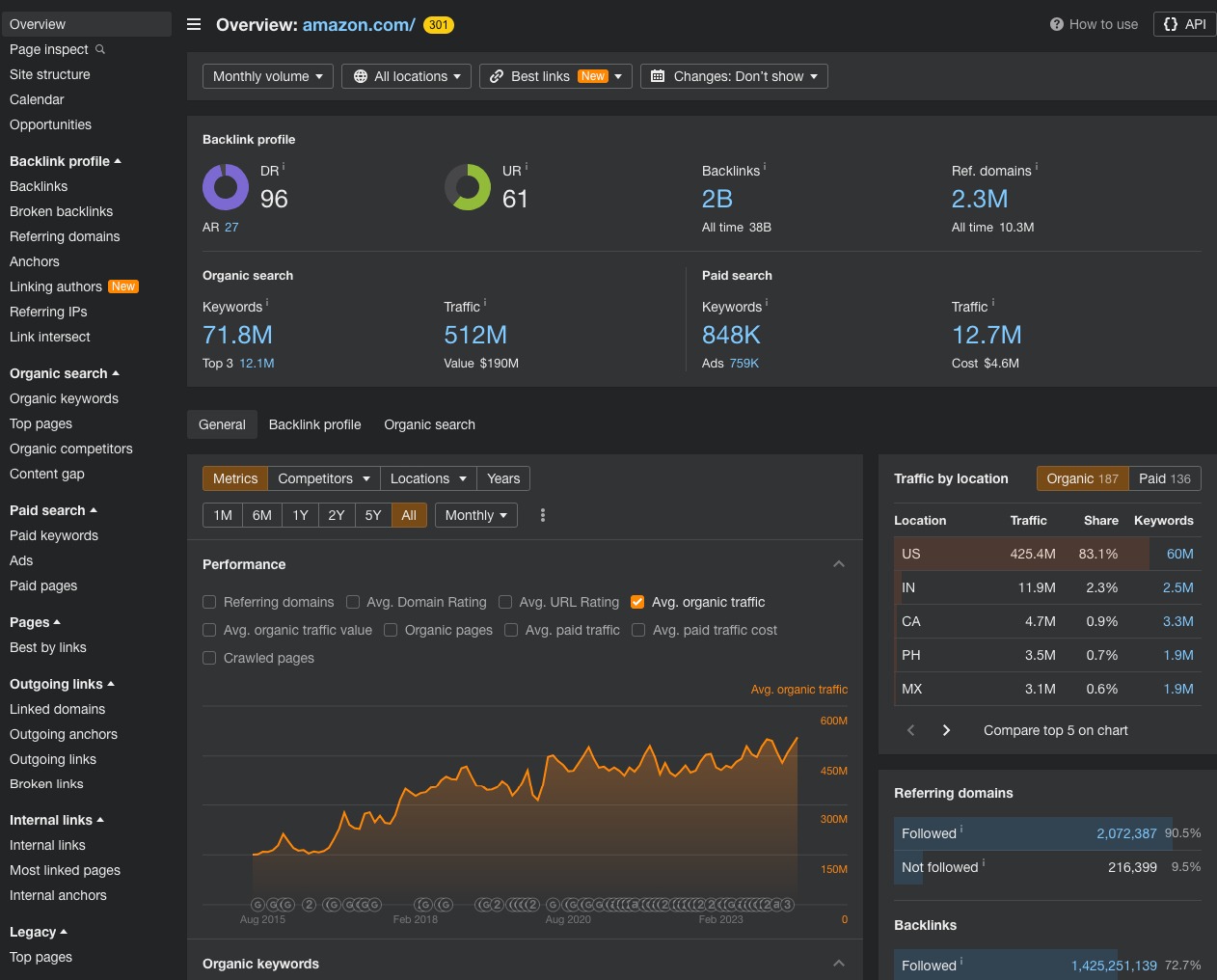
And here’s a list of keywords they target on their site.
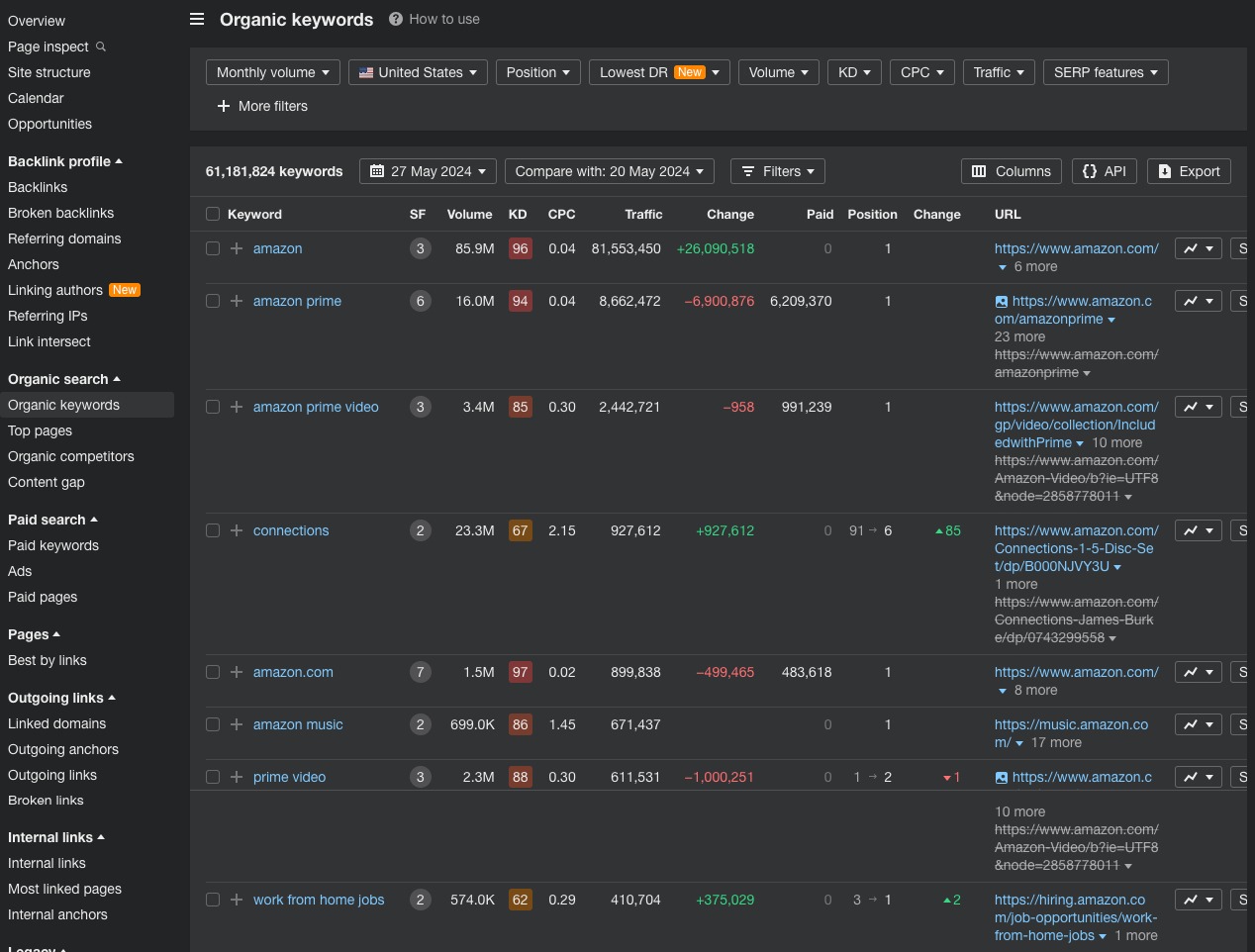
The next step in advanced keyword research is strategically mapping these keywords across the website.
This involves assigning specific keywords to relevant pages and ensuring each page is optimized for unique search terms without overlapping with others, which can lead to keyword cannibalization.
Effective keyword mapping improves the ranking of individual pages and enhances the overall site structure and user experience.
Incorporating long-tail keywords is also important in advanced keyword targeting. These more specific and less competitive keywords can attract highly targeted traffic and often lead to higher conversion rates.
Refer to our dedicated tutorial on keyword research to perform keyword research strategically.
3.3 Create High-Quality, Valuable Content
Creating high-quality, valuable content is a cornerstone of enterprise SEO.
It is essential for attracting and engaging a large audience and ultimately improving search engine rankings.
Unlike smaller websites, enterprise-level sites must produce a vast variety of content that caters to various stages of the customer journey and addresses the diverse needs of their target audience.
This involves generating in-depth, well-researched articles, detailed product descriptions, comprehensive guides, and engaging multimedia content.
For instance, Semrush excels in this area by creating extensive guides, blog posts, and case studies that provide substantial value to its audience, establishing itself as a trusted authority in the marketing and sales industry.
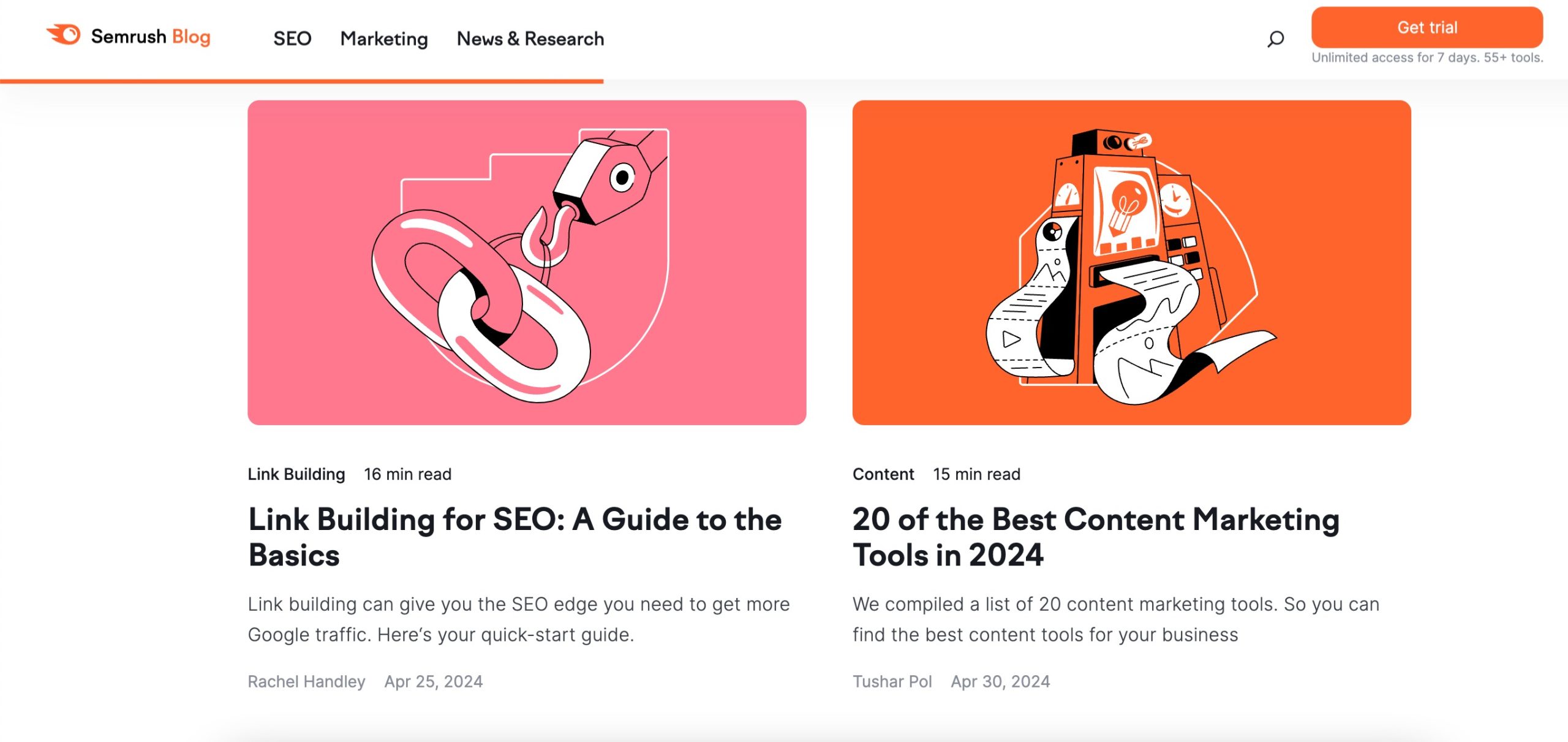
High-quality content for enterprises is not just about volume but also relevance and depth.
Content must be able to answer specific user queries, solve problems, and provide actionable insights.
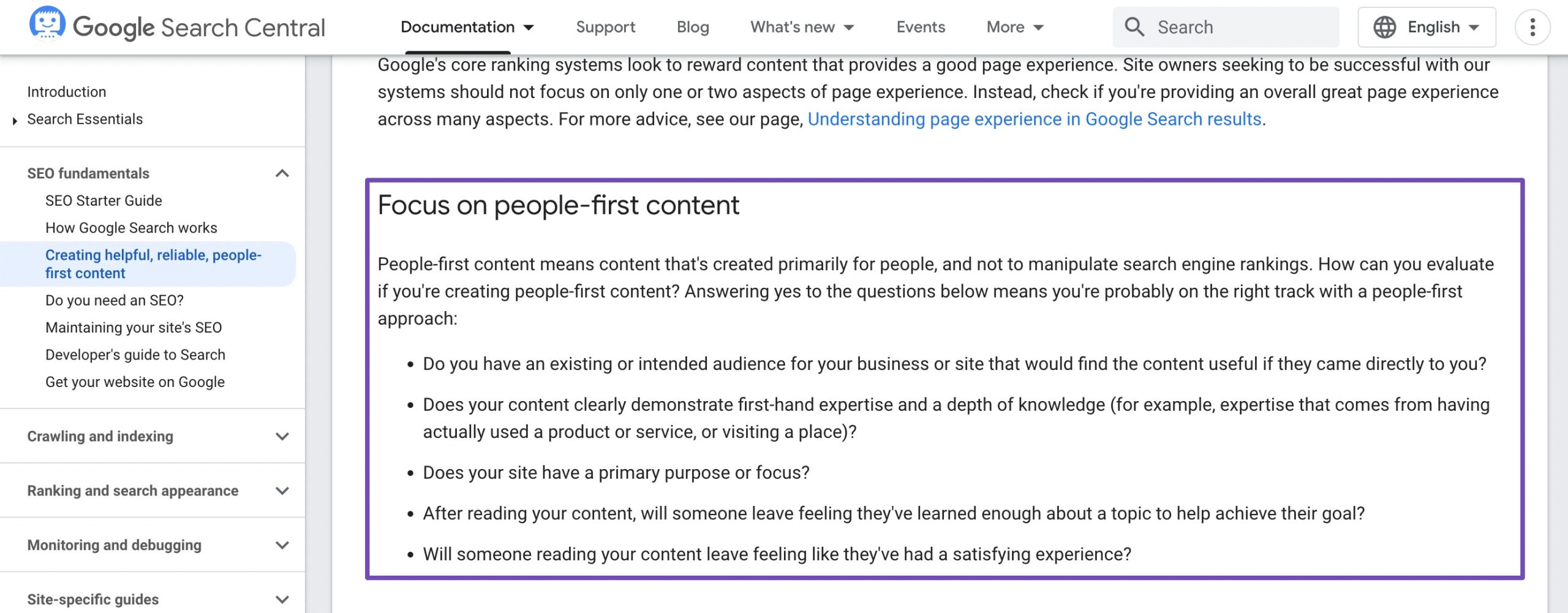
To enhance enterprise SEO, ensure your content adheres to the E-E-A-T (Experience, Expertise, Authoritativeness, and Trustworthiness) principles, creating valuable, credible, and engaging content for your audience. This relevance helps in ranking higher on search engine results pages (SERPs) as search engines prioritize content that meets user intent.
Content should also be regularly updated to keep it relevant and accurate. This practice not only improves the user experience but also signals to search engines that the website is updated and authoritative.
3.4 Optimize On-Page SEO Elements
Optimizing on-page elements ensures that each page on a large-scale website is fully optimized for search engines and user experience.
This process begins with creating unique, keyword-rich title tags and meta descriptions for every page, which help search engines understand the content and improve click-through rates from search results.
For instance, Apple optimizes its product pages with clear, keyword-rich descriptions and engaging multimedia elements to ensure high search visibility and user satisfaction.

Rank Math helps with on-page SEO by providing advanced features such as keyword tracking, content analysis, and automated optimization recommendations. It is used by enterprise sites like Twitch, WebMD, and H&M.
You can use Rank Math’s SEO Meta AI tool to write compelling meta titles and descriptions.
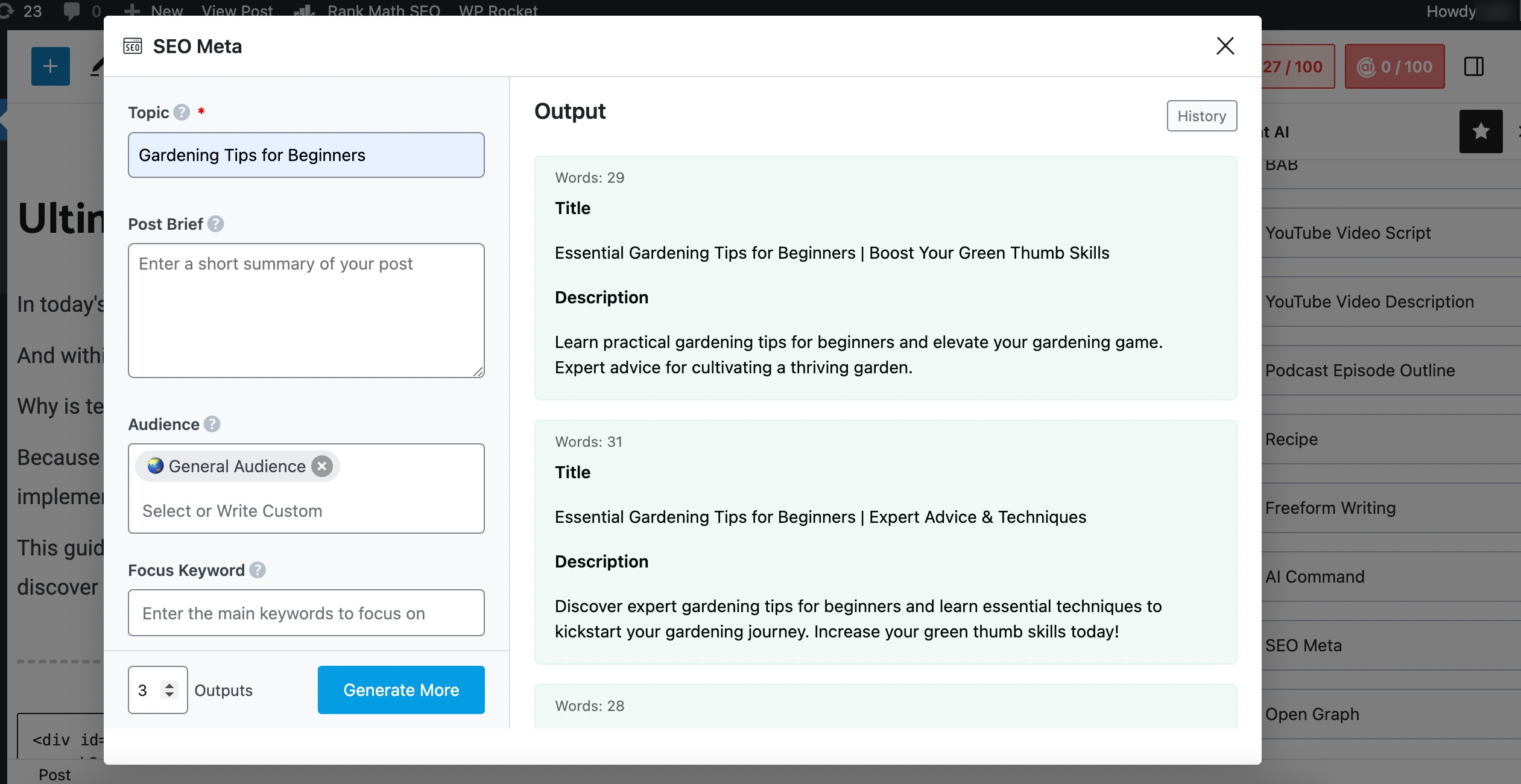
Header tags (H1, H2, H3, etc.) play a significant role in structuring content, making it easier for both the audience and search engines to navigate and understand.
Proper use of header tags helps to break down content into digestible sections, enhancing readability and ensuring that important keywords are highlighted appropriately.

Additionally, optimizing on-page content includes strategically placing keywords throughout the text and maintaining a natural and engaging tone. This involves placing keywords and using related terms and synonyms to create comprehensive content that meets user intent.
Other essential on-page elements include optimizing images with descriptive alt text, ensuring internal links are strategically placed to guide the audience to related content, etc.
Refer to our dedicated tutorial on on-page SEO to optimize your on-page SEO elements.
3.5 Don’t Forget About Technical SEO
Technical SEO improvements are fundamental for enterprise SEO as they ensure that search engines can efficiently crawl, index, and understand a large-scale website, leading to better rankings and user experience.
One of the primary technical SEO tasks is optimizing site speed. Faster loading times not only enhance user satisfaction but also align with Google’s Core Web Vitals, which are important ranking factors.

Another aspect of technical SEO is ensuring a mobile-friendly design.
With a significant portion of web traffic coming from mobile devices, enterprises must implement responsive design principles to provide a good user experience across all devices.
Moreover, large websites must fix crawl errors and ensure proper site architecture. Enterprise sites often have complex structures with numerous pages, making it essential to have a logical and hierarchical organization.
Refer to our dedicated tutorial on technical SEO and eliminate the technical issues that hamper crawlability.
3.6 Enterprise Link Building
Enterprise sites can utilize the same link-building strategies as any other website. However, they also have unique opportunities for acquiring backlinks that many smaller sites do not.
One such opportunity is leveraging unlinked brand mentions on a large scale. Unlinked brand mentions occur when another site mentions a brand without providing a link.
Here’s an example of unlinked brand mention:
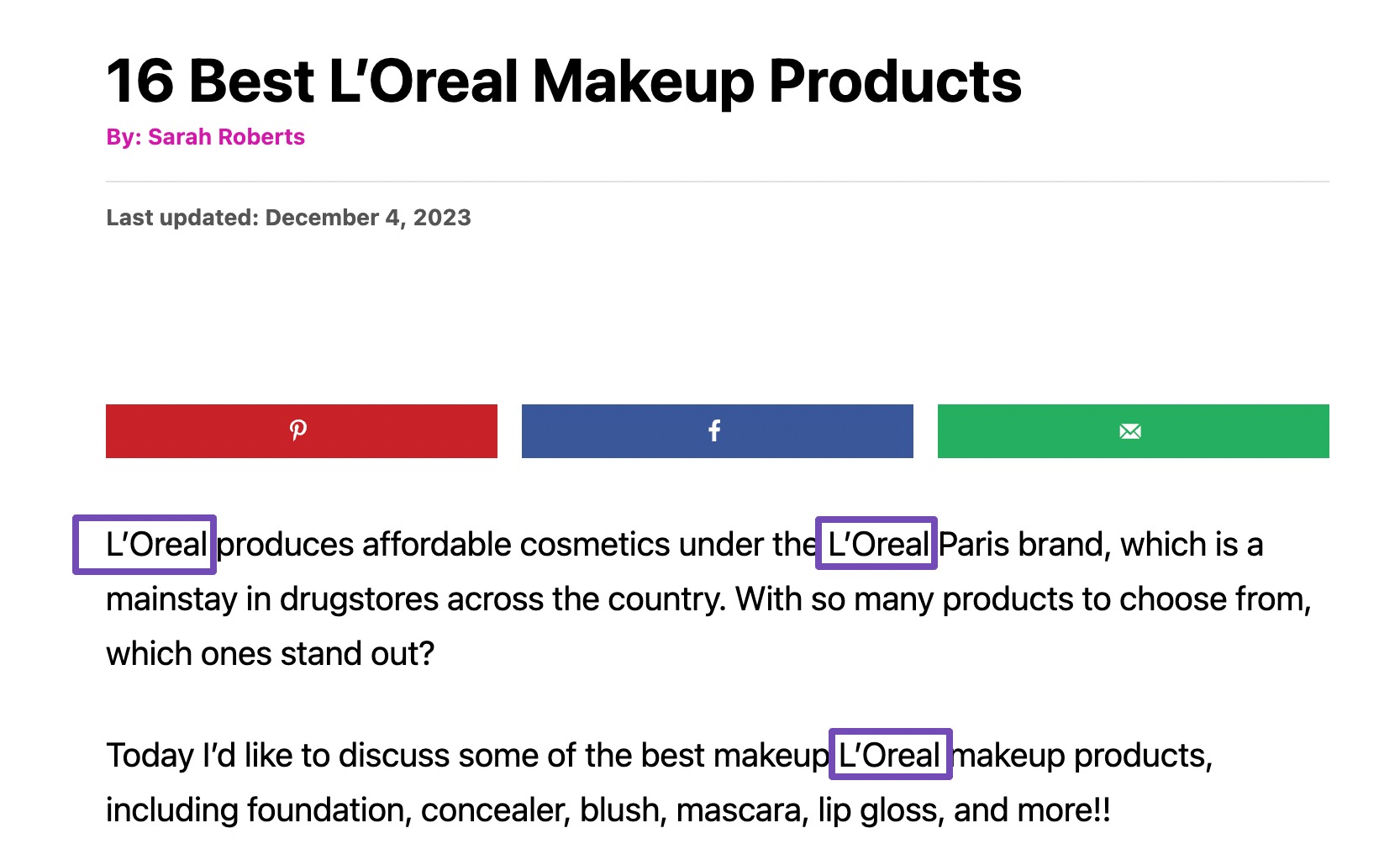
A popular and effective link-building strategy involves reaching out to people who have mentioned your brand without including a link and asking them to add one.
Since they have already mentioned your brand, they’re more likely to add a link because they acknowledged your brand for a reason. It’s usually not difficult for them to include a quick link.
4 Tools for Enterprise SEO
The below table provides a clear overview of various tools used for enterprise SEO, including their descriptions, and enterprise pricing.
| Product | Description | Enterprise Pricing |
| Google Search Console | Monitors website performance and indexing status and identifies technical issues. | Free |
| Google Analytics | Tracks website traffic, user behavior, and conversion data. | Free |
| Rank Math | Helps optimize WordPress sites with advanced SEO features, including keyword tracking and content analysis. | Starts at $49.99/month |
| Ahrefs | Provides in-depth backlink analysis, keyword research, and competitive analysis. | Starts at $ 14,990/month |
| Semrush | Offers keyword research, site auditing, and competitive analysis tools. | Starts at $499/month |
| Moz | Includes tools for site audits, rank tracking, and keyword research. | Starts at $599/month |
| Screaming Frog | Crawls websites to identify technical SEO issues such as broken links, duplicate content, and redirects. | Monitors website performance and indexing status and identifies technical issues directly from Google. |
| BrightEdge | An enterprise SEO platform that offers content performance tracking, SEO recommendations, and more. | No public pricing |
| Conductor | Provides insights into content performance, keyword rankings, and SEO recommendations. | No public pricing |
| Botify | A platform for in-depth technical SEO audits, including site crawling and log file analysis. | No public pricing |
5 Conclusion
Enterprise SEO is important for large-scale businesses to enhance their online presence and drive substantial organic growth.
It requires a strategic approach, using advanced techniques and tools to manage large-scale websites effectively.
By focusing on comprehensive site audits, advanced keyword research, high-quality content creation, on-page optimization, technical SEO improvements, and robust link-building strategies, enterprises can enhance their online visibility and drive significant organic growth.
Implementing these best practices ensures that enterprise websites rank higher in search engine results and provide a superior user experience.
If you like this post, let us know by Tweeting @rankmathseo.
